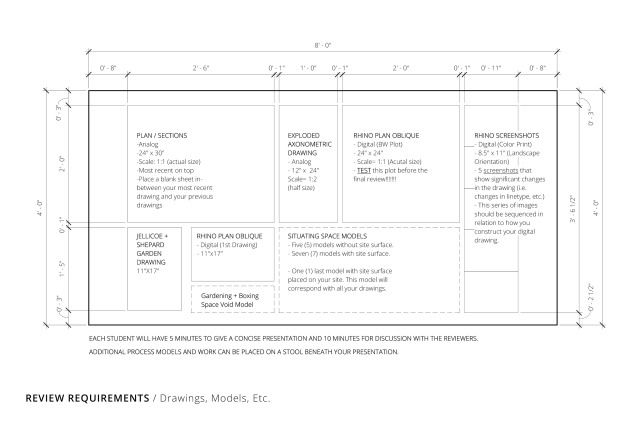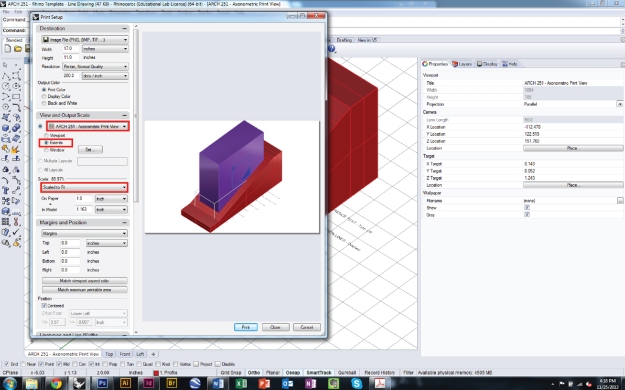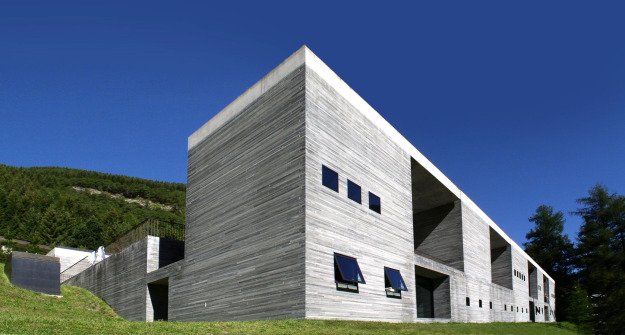
Materials:
– Two (2) sheets of vellum – 24” x 30”
Procedure:
1- Make two (2) sets of drawings based on the sequences and spaces found in two (2) of your models. These sets will consist of one (1) plan, one (1) longitudinal section, and one (1) transverse section all cut through the main sequence of your spaces.
2- Position the plan, longitudinal section, and transverse section on a 24” x 30” sheet of vellum. The right edge of the plan and longitudinal section must lie on the center line of the sheet. The top of the plan must lie 4” below the top edge of the paper, the top of the longitudinal section must lie 4” from the bottom of the plan, and the left edge of the transverse section must lie 4” from the right edge of the plan.
Criteria:
1 – In your drawings you must show where you are cutting the plan and section.
2 – In plan and section, the linetypes you will use are cut lines, secondary lines, joint lines, hidden lines, construction/guidelines, and poche lines.
3 – A Cut line is any space, object, or material that is being cut through.
4 – Secondary lines lie beyond the cut line. In plan, you must show what is below the plan cut; in section, you must show what is beyond the section cut.
5 – Joint lines are where two materials, whether similar or different, meet. They show how the model is constructed.
6 – Hidden lines are any object or material that is not visible. In plan, you must show what is above the plan cut; in section, you must show objects hidden by another opaque object.
7 – Construction/Guidelines are how the drawing is made.
8 – Poche lines are solid materials that are being cut through.
– Use a Hatch pattern for poche
– Hatch blue foam only. Do not hatch chipboard or wire.
– The hatch must be scaled so that it reads as a consistent fiLl.
– The lines must work together and not as individual lines.
– Use a larger scaled hatch for the site infill.



















